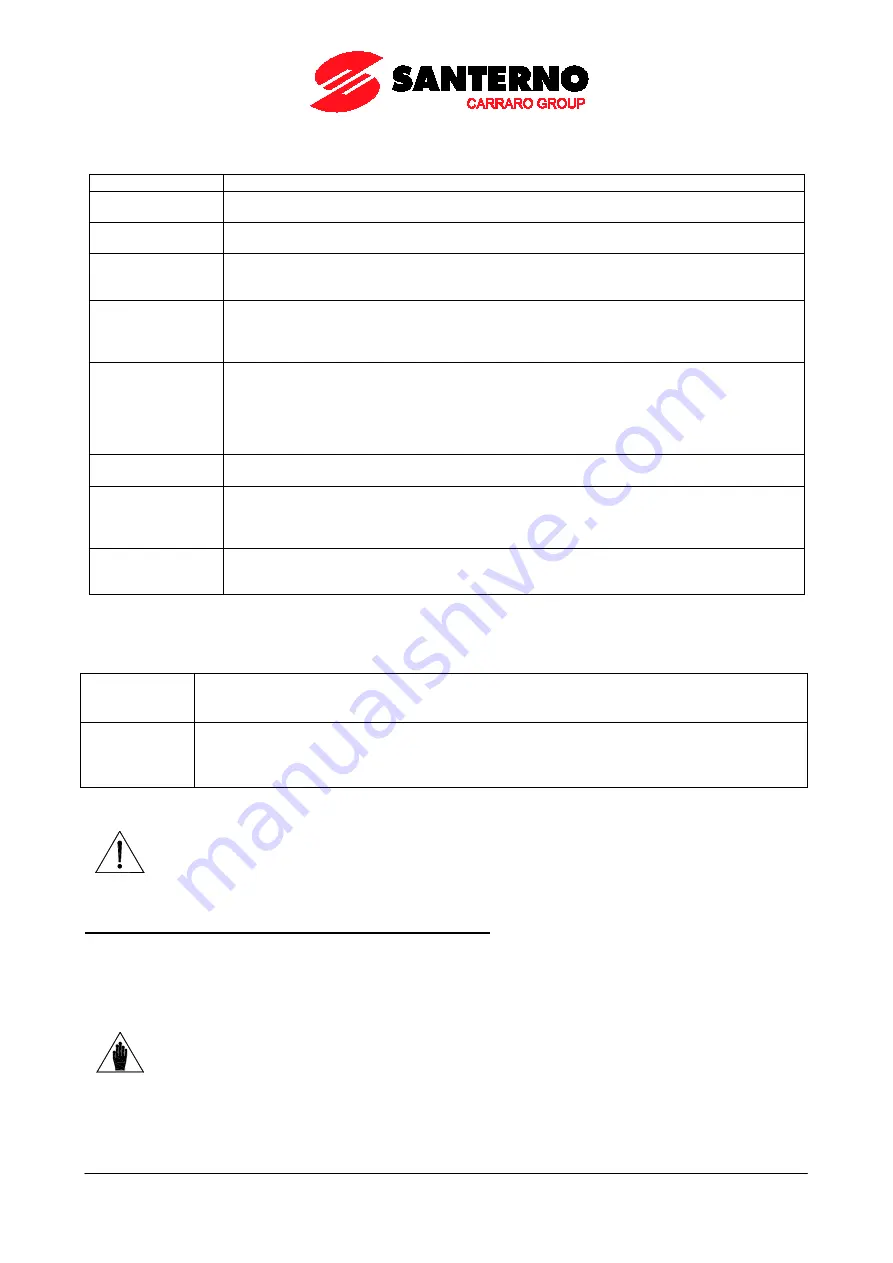
PROGRAMMING GUIDE
SINUS PENTA
227
/
486
Table 61: Virtual Digital Output Modes
DISABLING
The selected digital output is disabled.
DIGITAL
The digital output depends on a selected digital signal and on the logic output function
(True/False).
DOUBLE DIGITAL
The digital output depends on 2 selected digital signals, on the logic function calculating the
output value and on the logic output function (True/False).
ANALOG
The digital output depends on a selected analog variable, which is tested through Test A
obtaining one digital signal; starting from its value, the selected logic function calculates the
True/False end value.
DOUBLE ANALOG
The digital outputs depends on 2 selected analog variables: Test A is performed for variable A,
whilst Test B is performed for variable B, thus obtaining 2 digital signals; starting from their
value, the selected logic function calculates the output value, whereas the logic output function
True/False calculates the end value.
DOUBLE FULL
As DOUBLE ANALOG or DOUBLE DIGITAL mode, but both digital signals and analog
variables can be selected.
If you select a digital signal, its value (TRUE or FALSE) is used to calculate the selected logic
function.
If you select an analog variable, the test selected for this variable is performed, and its result
(TRUE or FALSE) is used to calculate the selected logic function.
BRAKE (*)
As ABS BRAKE below, although the selected variables are not expressed as absolute values,
but depend on the selected tests.
ABS BRAKE (*)
The ABS BRAKE mode allows controlling the electromechanical brake of a motor used for
lifting applications. The ABS BRAKE mode is applied by selecting the measured (or estimated)
speed value [A71] as the first variable and the output torque [A80] as the second variable.
Variables are considered as absolute values.
ABS LIFT (*)
As ABS BRAKE, but the brake unlocks (digital output open) when a given torque value is
attained, which is automatically determined based on the last torque value required in the
previous stroke.
(*)
The activation and deactivation of the outputs programmed as
BRAKE
,
ABS BRAKE
and
ABS LIFT
is affected also
by other conditions depending on the drive status. Namely:
Activation
Conditions to be considered in logic AND with the following programmed functions:
•
Drive accelerating or in pre-tensioning mode (see BRIDGE CRANE MENU).
•
Drive running, no alarm triggered
Deactivation
Conditions to be considered in logic OR with the following programmed functions:
•
Drive not running or locked due to an alarm condition
•
Drive in tracking error mode (see ENCODER/FREQUENCY INPUTS MENU), unless parameter
C303
is set to NO (see BRIDGE CRANE MENU).
CAUTION
The digital outputs programmed as
BRAKE
,
ABS BRAKE
or
ABS LIFT
are inactive in
a drive configured in
slave
mode (torque control).
In a master/slave system, both electromechanical brakes must be controlled by the
master.
Variable A Selected for MPL1 (2, 3, 4): P351,
(
P360
,
P369
,
P378
)
Selects the digital signal or the analog variable used for Test A (set with
P353
/
P362
/
P371
/
P380
).
The whole list of the selectable items and their description are stated in Table 48.
If a digital signal is selected, Test A is not performed: therefore, the comparison value for Test A (set with
P355
/
P364
/
P373
/
P382
) has no meaning.
NOTE
This parameter can be accessed only if the operating mode of the digital output
concerned is other than zero. Example: MPL1
P350
≠
0.






























